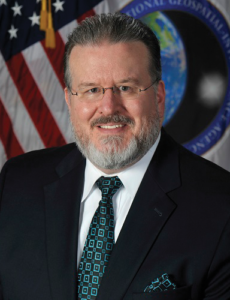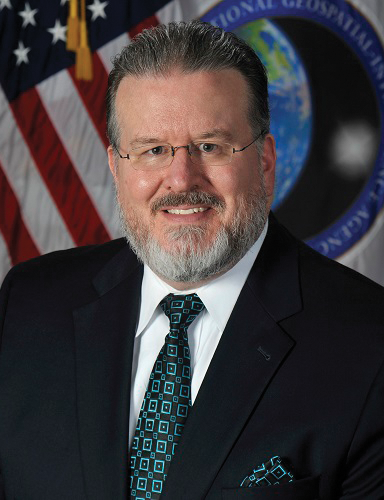
Justin Poole, deputy director of the National Geospatial-Intelligence Agency, the main source of geospatial intelligence for the Department of Defense and the U.S. Intelligence Community, spoke at the Kalaris Conference on Sept. 27 in Gaston Hall, an event that brought several national security leaders to Georgetown. Poole currently manages day-to-day operations of the NGA and has worked in the national security industry for 28 years.
The Kalaris Conference, which focused on current trends in national security, included journalists, professors, employees of national security organizations and members of think tanks like the Brookings Institute.
The Hoya spoke to Poole during the daylong conference, touching on topics of artificial intelligence and geospatial security strategies.
Can you tell me in your own words a little bit about what you do?
The agency that I am responsible for running as the deputy director is the ….World’s premier provider into spatial intelligence. Geospatial intelligence is one of what we call hints, or disciplines of intelligence that describes where and what and, in context, is happening on any particular point on the Earth’s surface. We can convey that intelligence information — or sometimes we call it products — in a lot of forms. It can be an answer to a question: Are troops moving there? It can be graphical — oftentimes it’s communicated through maps, through charts.
Just because I noticed that a lot of the talks today are about cybersecurity or involve cybersecurity in AI, how has that reshaped the national security and national security world?
Cyber is a little more on the world stage, in the press, etc., but the explosion of all things digital — big data, information, volumes we’ve never seen before — we have an opportunity as purveyors of intelligence to use this information, and we do. We have to be concerned about the chain of custody, where it came from, is it accurate, has it been influenced by some sort of bad actor from cyber perspective, are the systems that we are using vulnerable?
We are not unique; NGA is not unique in that. The entire intelligence community, D.O.D. and the world is susceptible to cyber. The way it has changed is it has made our awareness of it and our need to deal with it and invest in the appropriate measures to protect the information that it’s our responsibility to provide, that keeps our national security safety.
How do you contribute to protecting civilians? How do you know who is a civilian and who is not?
Yeah, the high-level answer is — I don’t want to say it’s not my job to protect civilians. It’s my job to inform the people who will be making decisions about the protection of civilians, so the easiest way to describe our role is geointelligence about what things are on the ground: That’s a mosque; that’s a hospital; that’s a housing area; that’s something else. And so we’re able to provide that context about a geographic region that allows whoever is doing operations to understand the landscape.
And there are ways you see in the news of determining where a particular, let’s just say adversary — you mentioned ISIS, what types of places they go, where they, do they like to frequent these kinds of facilities, then my teams can find those for our military, our allies, our war. But to not always put a wartime setting on it: If we’re looking at flooding disasters or hurricanes in Haiti, one of the first things the first responders want to know is where were the schools, the churches and maybe elder care facilities and the hospitals. They want to know where everything is, but those are maybe places where you want to go first to make sure that people are taken care of. So we can do that as well, if asked by FEMA. … Don’t forget the humanitarian aid disaster relief piece.
How do you respond to natural disasters? Is it a reactionary response or do you prepare for them in advance?
When it comes to the business of intelligence, predictive analysis is very important. So that’s more about — you see a pattern of life of something, we have analysts who have such steep tradecraft that they can offer an assessment of what might occur next. And I say that very carefully, because while predictive analysis is a thing, sometimes when you say we can predict, I picture crystal balls, and that’s not what we mean. We can give you with varying degrees of confidence an assessment of what might happen, when might a military exercise begin, when might an attack on a something occur.
To the last part, no, we focus on everything. More and more in the counterterrorism world it’s not about state actors, so we do it all. Where you’re going with the question about individual people is starting to get into things that 1) are fairly sensitive but 2) also involve other organizations, but to try to give you something, it goes back to pattern of life again. You know — where are things within a city, you know where are the houses, where are the internet cafes, where are this, that and the other thing. So we bring that to the table and combine with other partners. We can try to limit the types of things that you’re talking about. And we have been effective, but we’ve had a lot of practice on it.





















